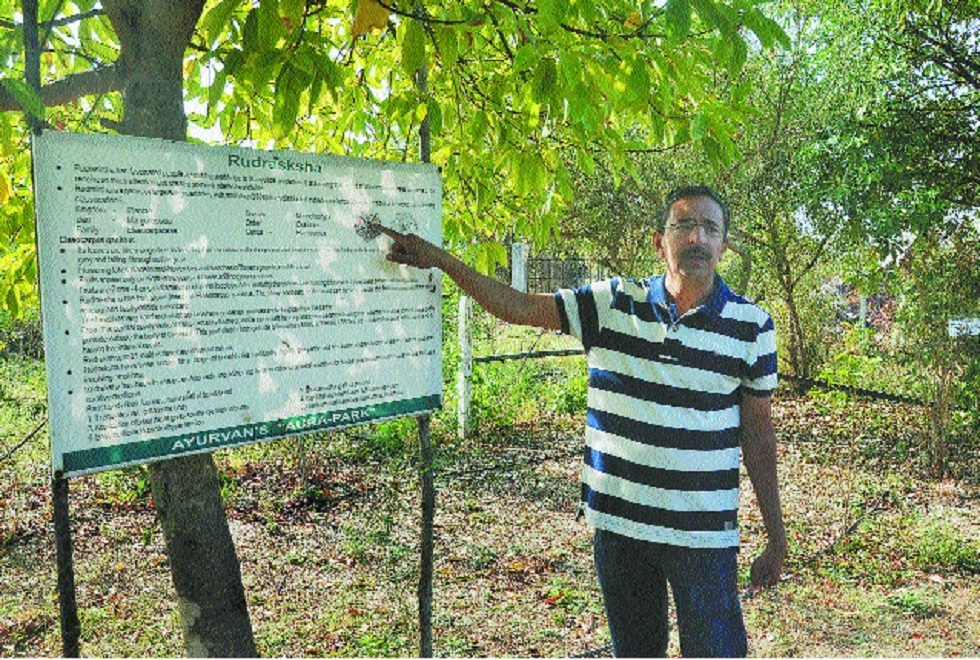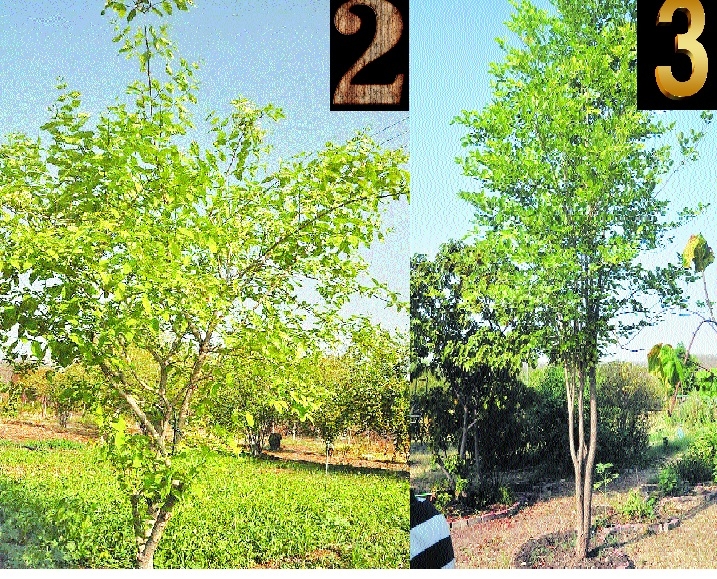Ayurvan’s Aura Park tells a tale of ancient India’s medicinal assets
| Date :14-May-2019 |

By Kaushik Bhattacharya:
Everyone loves a garden around the house. And most of us just drool over the fragrant, colourful visage of a garden. Ambarish Ghatate is, however, different. He prefers a garden that does not just look splendid but also have medicinal qualities. Home to more than 500 medicinal plants, Ayurvan’s Aura Park tells the story of how India spread the ancient knowledge of medicine as a gift of nature. “Many species are now on a verge of extinction due to lack of proper knowledge of medicinal plants in medical science. Ancient Indian medicine depends on such plants, and Ayurvan is trying to conserve and nurture rare medicinal plants,” said Ghatate to The Hitavada.

Aura Park is a 6 acre garden which is situated inside a forest near Bazargaon on Amravati Road. Here one may find a proper travelling path leading towards the glory of life closer to nature; untrodden and yet promising. A biodiversity lover Ghatate is shaping up shiny hope for next generations of all living organisms including our own human. Throughout the year excepting the two months of long summer days this place is surrounded by green hillocks and in these months this place has wonderful evenings much cooler than Nagpur and enjoyable beyond imagination.

1) Aura Park is a brain child of Ambarish Ghatate who is explaining about Rudraksha plant at his Aura Park to visitors. 2) Holarrhena Antidysenterica plant (Kuda), best medicine for anti-dysentery which is rare species is available at the park. 3) A plant of Red Sandalwood which has medicinal use.
4) College students posing for a snap near pond full of lotus at Aura Park. The post have different types of lotus. 5) Visiters can see the process of growing wheatgrass at the
Aura Park. 6) Naturopath Mukund Sherekar explaining some information to students
during a workshop.
“Each plant has a story, each one may bring up an industry and may also provide a research topic to the curious academicians. There is an amazing past glory to some plants as they were the part utilities of golden Indian era,” said Mukund Sherekar, a naturopath and the person who is looking science in the nature. “This place is not merely a collection of medicinal plants for academicians; it is a place where the biodiversity appears in its enjoyable moods,” Sherekar added. Nakshatra Van, Navagraha Van, Dashamula Sangraha, Panchwalka, Bird Watching, Star Gaze, Vanaspati Sangraha, Gou Seva and Darshan and many other activities one can do here during a day-long visit.
For children, the Park has many activities like traditional games, usual slides and swings, adventure sports, identify plants, etc. A classical tabla show and cultural activity in the evening makes it hot favourite among visitors. Visitors and researchers can get medicinal plants like Adulsa, Miswak, Artemisia Annua, Punarnava, Sahadevi, Broomgrass, Tikhadi plant, Khus, Vidhara, Rakta Rohida, Royalfina Serpentina, Rudraksha, Rakta Chandan, Tulsi, Insulin etc. in Aura Park.
They produce bio gas with the help of weeds and cow dung, produce solar energy for electricity and manure from nature. They conduct workshops and visit for schools and colleges students throughout the year. It is a favourite place for young researchers who are making career in Ayurveda. The six famous seasons of India offer six different treats to the visitors as the different plants have different flowering seasons.